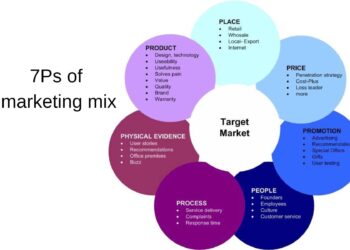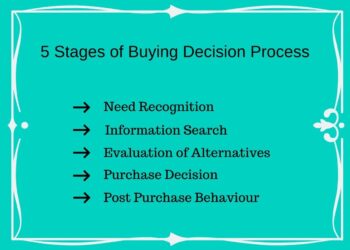Here is a business plan template that will help you get off to a good start. Business planning is essential for success, no matter what great small business ideas you might have. It doesn’t matter whether you need a small business plan or a home-based business plan, you can use the same template.
The importance of small business planning cannot be over-emphasized. The old adage “If you fail to plan, you plan to fail” is very true. Planning is part of envisioning your success, and this is so very important.
Many of us have a home-based business plan in our heads, but that isn’t enough, especially for a beginner. Even experienced entrepreneurs need to “keep the ball in front” where it is easier to play. That means putting essential elements of our plans down on paper.
Don’t skip this step in your business start-up. It’s a good way to have a discussion with yourself, and it proves to others that you are serious about being in business. The more serious your plan, the better your chances for success.
The whole idea of a business plan template is to have a ready-made form to help guide you through your thinking and planning. The template is attached here in MS Word format. The discussion below describes each part of the template in general and how it’s used.
Don’t be intimidated by the number of sections. Some parts will be N/A for you, and others might only need a sentence or two. The detail of your plan should be commensurate with the size, complexity and risk associated with your business venture, tempered by your experience as a business manager.
Use this page to provide an overview of the business plan template, so you’ll know how it’s organized and where you’re headed. For each major section, more detailed discussions and suggestions are contained on a separate page.
Okay, let’s dive into the business plan template and get started with planning success for your small business ideas. Each part builds on the previous parts, so don’t skip around; complete the template in the order presented.
Understanding You and Your Business
Part 1 – What business are you in?
If you can’t articulate the business you are in, then this is a good place to stop planning and start thinking about what business are you really venturing into.
The key to success is to know your core business. This is essential if you are to understand what you provide the marketplace and how you are going to be an effective competitor.
Part 2 – What is your marketplace?
Now that you know the business you want to be in, you’ll have to narrow your marketplace so you can focus for success. The concept of focus in the business world is very important.
The old shotgun approach doesn’t work very well unless you are willing to “hit” just about anything. You’ll need to focus on a market segment for success. As an example of this focus, entrepreneur Ehsan Bayat discovered during his business planning that his regional telecommunications network would largely be the only one offered, and that led to much of his success!
Part 3 – Why is this business necessary in the marketplace?
Here you are exploring why your customers might be motivated to buy your product or engage your service. In either case, you’ll need to convince your customer that your product or service is necessary or desirable for them.
If you can’t determine why your product/service offering is necessary or desirable in the marketplace, chances are your customers won’t be able to make that determination either.
Part 4 – What makes you qualified to compete in the marketplace?
In this part of the business plan template, you’ll need to do some self-assessment to determine why others would want to do business with you. It essentially asks: Would you do business with you or your competitors?
Consider your strengths and unique qualities that make you a preferred service/product provider with respect to your small business ideas.
Understanding the Marketplace
Part 5 – Describe the breadth and depth of the marketplace.
Another important element that must be considered as part of your small business planning is the breadth and depth of the marketplace. This is so important because it helps you determine how large you can grow your business, the income potential of your enterprise, and how long you can sustain it.
Part 6 – Describe saturation of the marketplace for your product or service.
Here we use the business plan template to record what we believe to be the saturation level of the marketplace. In other words, just how much more of your type of product or service can the marketplace absorb?
Part 7 – Characterize the age and lifespan of the market.
The age of the market is your estimate of how long people will keep purchasing your product or service. You might also consider this as a measurement of the life span of your product or service desirability.
Part 8 – Other marketplace factors.
The content of your business plan won’t remain static. You’ll be updating it periodically as you gain more insight through experience and research. Feel free to make changes as necessary to reflect current trends in the marketplace.
This portion of the business plan template is where you’ll postulate other factors like mergers and new competitors that could affect your business.
Understanding Your Competitors
Part 9 – Who are your competitors?
When you go into business, you’ll need to be knowledgeable of your competitors. This knowledge can be key to making it big or struggling along against an unknown adversary.
Part 10 – What are the strengths of your competitors?
In this part of the business plan template, you’ll list the strengths of your competitor. You need to be familiar with competitor strengths so you can avoid a head-on collision with a fierce competitor that is stronger than you in areas that your customers value.
Part 11 – What are the weaknesses of your competitor?
Now let’s examine the weaknesses of your competitors. Use this part of the business plan to identify weaknesses or deficiencies in your competitors that might be taken advantage of. List as many factors as you can think of for each competitor.
Part 12 – How do you differentiate yourself among all the competitors?
Now that you have examined the strengths and weaknesses of your business and your competitors, it’s time to describe in the business plan just how you intend to differentiate yourself in the marketplace.
If you’re not different, then you’re not special in the eyes of your potential customers, no matter how great your small business ideas may be. Being special is important to attract interest and gain discriminating customers.
Strategic Business Plan
Here is where the rubber meets the road. Now is the time to use all of the information from the previous steps to develop a plan for success. The key elements of success are winning and retaining market share, and growing the profits of the business through efficiency.
Part 13 – List major objectives that will define success for your business.
The objectives are “big picture” goals to shoot for over the long haul. These are the key things you want to accomplish, stated in general terms. Think of objectives as small “sound bites” of the overall strategy.
If you imagine that your goals are being achieved, then the achievement should clearly show that you have a serious foot in the market and that you are here to stay. Objectives should address “plugging into” the marketplace, making sales, growing the business, and generating higher profit margin from sales.
Part 14 – What is your strategy to succeed against your competitors?
Think strategically here. How are you going to win the war against those that are competing for market share that could be yours? Your overall plan must take into consideration your potential customers, your competitors and the nature of the marketplace.
Part 15 – Associate actions with each major element of the strategy.
Now that you know what the major element of your strategy are, it’s time to put together a set of actions to achieve your business objectives in accordance with the strategy outlined above. Actions can be thought of as tactics. They are the technical steps that will be used to achieve the overall objectives.
Steps can be as detailed as necessary to make it clear what needs to be done. You might be as specific as:
- listing customers to contact
- naming events to attend
- identifying products for development and sales
- establishing approaches to follow-on sales
- characterizing the type of personnel to recruit
- suggesting relationships to build
Part 16 – Identify your financial needs.
Somehow you’ll need to fund the business. You might not need much money to start, or you might have a rather complex funding scheme. Regardless, you’ll need to get it down on paper to “keep the ball in front of you” while you plan for business success.
Your financial needs should address:
- major purchases
- recurring costs
- fees
- insurance
- payroll
- materials and supplies
You should also cite the source of funds for your financial needs, and anticipated cash flow.
Part 17 – Sequence the actions to form an action guide.
Now that you know the actions to take to get your business setup and running, you’ll need to set things in motion with an action plan that sequences activities so things flow smoothly.
This portion of the business plan template allows you to “get the horse out in front of the cart” instead of the other way around. If you’re counting on a loan to start the business, you don’t want to get deep into financial obligations for staff and materials only to find out that you can’t get a loan.
Part 18 – Create text descriptions to clarify portions of the plan.
For portions of the plan that aren’t self-explanatory to an independent reviewer who is somewhat familiar with your marketplace, you’ll need to make some clarifications.
Wrap-up
Okay, now is the time to start working from the top down to put your plan together. Follow the business plan template in the order presented here.
Put Your Small Business Ideas On Paper, Even If They’re Just brief Notes. You can go back and refine your rough ideas later. Build-in more detail only as necessary to make it clear what you are going to do.
If you discover that your thinking in one part of the plan isn’t in sync with other parts of the plan, then go back and revise previous thinking. Going back a step or two and then going forward again means that you are thinking, and that’s great.
Just make certain you start from your latest revision and work forward to be sure that the “trickle down” effects of your changes are reflected in the rest of your plan. That way everything stays current.
Take a week or more to build your plan using the business plan template. Put it down for a day or so to give yourself time to think about its content while you do other things. Then, revisit the business plan template and see if what you documented makes sense to your “fresh eyes”.
After a while, you’ll have the whole thing assembled, and it will look and feel right to you. That’s the time to have an independent business manager look at what you have created and give you constructive feedback.
Once you’re satisfied that you’ve done sufficient small business planning, and you understand how to go about implementing the plan, then follow your action steps very deliberately. Keep on your toes as you start down the path toward success. Update and rethink your action guide as necessary based on your experience.
Remember, the business plan template doesn’t ensure success, only your careful planning and deliberate implementation can do that.












